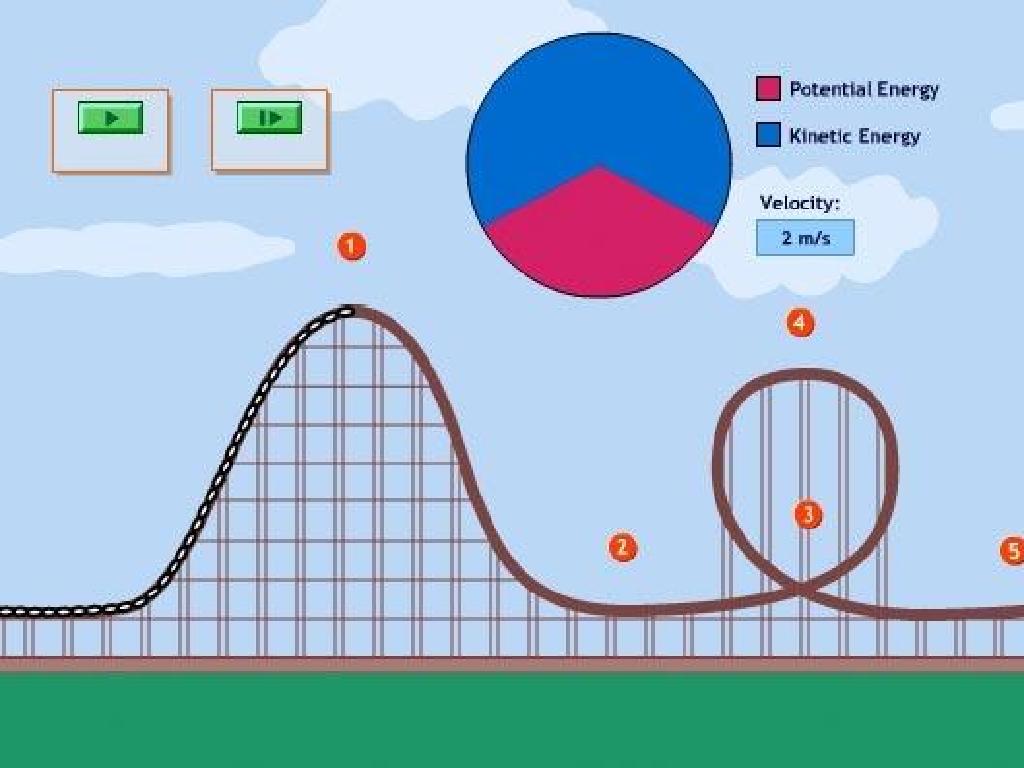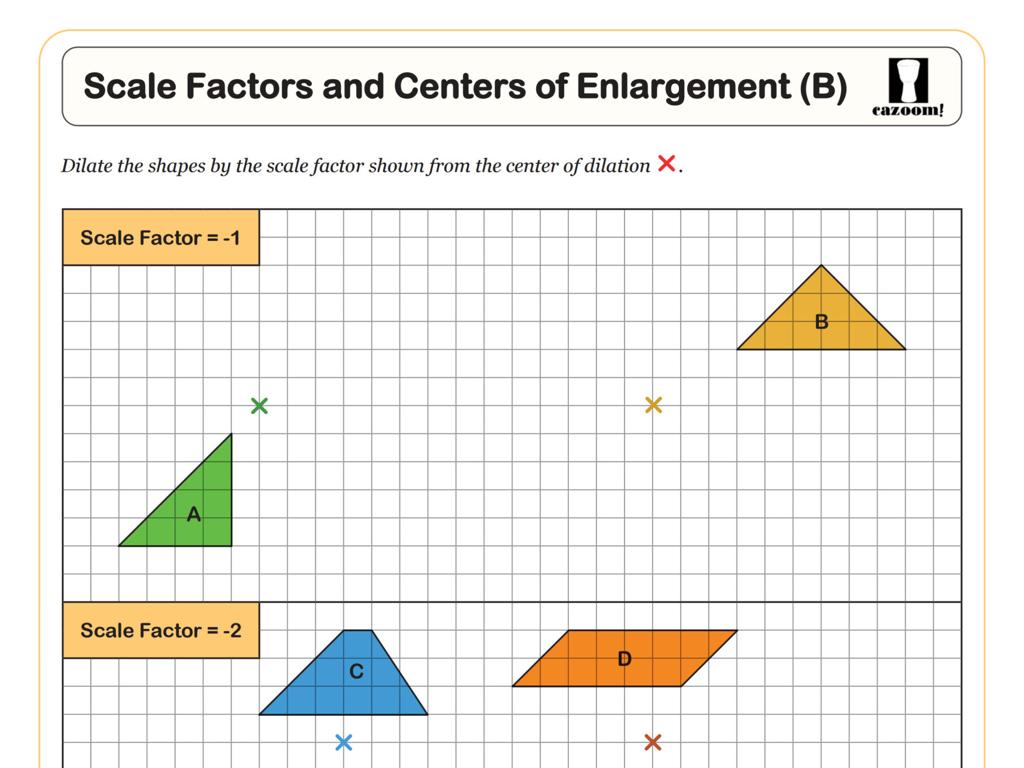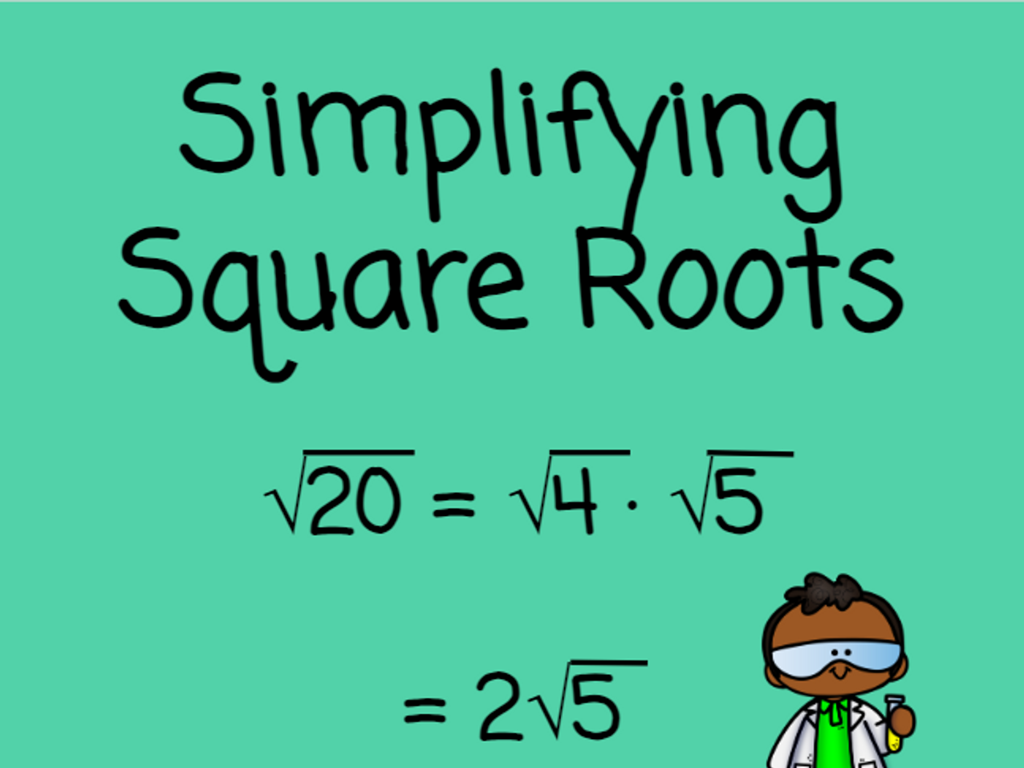Identify Earth'S Land Features Using Satellite Images
Subject: Science
Grade: Fourth grade
Topic: Earth'S Features
Please LOG IN to download the presentation. Access is available to registered users only.
View More Content
Today’s Adventure: Identifying Earth’s Land Features!
– Explore our planet Earth
– Satellite images as a tool
– Satellites take pictures from space to show Earth’s surface
– Recognize different land features
– Look for mountains, rivers, forests, and deserts in the images
– Importance of satellite imagery
– Helps scientists and us understand Earth’s geography and environment
|
This slide introduces students to the exciting world of Earth’s diverse land features through the lens of satellite imagery. Begin by discussing the planet Earth and its vast landscapes. Explain how satellites orbiting Earth capture images that provide us with a unique perspective of our planet’s surface. Teach students to identify various land features such as mountains, rivers, forests, and deserts using these images. Emphasize the significance of satellite images in studying and understanding Earth’s geography, natural resources, and environmental changes. Encourage students to think about how this technology contributes to our knowledge and the ways it can be used in different fields such as meteorology, environmental science, and urban planning.
Satellite Images: Earth from Above
– Satellites act as Earth’s eyes
– Satellites orbit Earth, capturing images from space
– How satellites photograph Earth
– They use special cameras to take pictures of Earth’s surface
– Satellite images vs regular photos
– Satellite images show large areas; photos show smaller, detailed views
– Importance of satellite imagery
|
This slide introduces students to the concept of satellite images and their role in observing Earth’s features. Satellites, which orbit our planet, are equipped with advanced technology to capture images from space. These images are different from the photos we take with our cameras because they can show vast areas of the Earth at once, providing a unique perspective on land features. Understanding the difference between satellite images and regular photos is crucial for students as they learn to identify Earth’s features using these tools. Encourage students to think about the benefits of viewing Earth from space, such as tracking weather patterns or studying environmental changes.
Exploring Earth’s Land Features
– Types of land features
– Mountains, valleys, rivers, plains
– Characteristics of landforms
– Height, shape, size, and location
– Global examples of features
– Rockies, Grand Canyon, Nile, Great Plains
– Observing features via satellites
|
This slide introduces students to the various types of land features found on Earth, such as mountains, valleys, rivers, and plains. Discuss the unique characteristics that define each type of landform, including their height, shape, size, and location. Provide real-world examples of each feature, like the Rocky Mountains for mountains, the Grand Canyon for valleys, the Nile River for rivers, and the Great Plains for plains. Explain how satellite images help us observe and study these features from space, giving us a better understanding of our planet’s geography. Encourage students to think about local land features and how they might look from a satellite’s perspective.
Reading Satellite Images: Earth’s Land Features
– Satellite images show Earth from above
– Colors and patterns help identify features
– Dark blue for deep water, light green for plains
– Spotting mountains, rivers, and more
– Look for winding lines for rivers, pointy shadows for mountains
– Understanding images helps us learn about Earth
|
This slide introduces students to the concept of interpreting satellite images to identify different land features on Earth. Explain that satellite images are like photos taken from space that show us what our planet looks like from above. Discuss how different colors and patterns can indicate various natural features, such as water bodies, vegetation, and terrain types. Use examples like dark blue often represents deeper water, while lighter colors may indicate shallow water or land. Show how the shape and texture in the images can reveal mountains, rivers, forests, and deserts. Encourage students to think about how these images can be used in real life, such as in weather forecasting, navigation, and studying environmental changes. Provide actual satellite images for students to practice identifying features.
Satellite Images in Real Life
– Scientists’ use of satellite images
– Geographers map Earth’s surface, track changes over time
– Weather forecasting with satellites
– Meteorologists predict weather patterns, storms
– Disaster relief via satellite
– Quick assessment of affected areas, efficient aid distribution
– Satellites aid environmental protection
– Monitoring deforestation, ice melt, and habitat loss
|
This slide aims to educate fourth-grade students on the practical applications of satellite images in various fields. Scientists and geographers use these images to study and map the Earth’s surface, observing changes over time. Meteorologists rely on satellite data to forecast weather and track storms, which is crucial for public safety and planning. In disaster relief, satellites provide a bird’s-eye view of affected areas, allowing for quick assessment and efficient distribution of aid. Additionally, satellites play a vital role in environmental protection by monitoring critical issues such as deforestation, ice melt, and habitat loss. Encourage students to discuss how these applications of satellite imagery might impact their daily lives and the environment.
Be a Satellite Detective!
– Class activity: Analyze satellite images
– Work in pairs for diverse observations
– Identify different land features
– Look for mountains, rivers, forests, and deserts
– Share findings with the class
– Discuss what you’ve learned about Earth’s surface
|
This interactive class activity is designed to engage students in the practical application of identifying Earth’s land features through satellite images. Students will work in pairs to encourage collaboration and multiple perspectives when analyzing the images. Provide a variety of satellite images for students to examine and identify features such as mountains, rivers, forests, and deserts. After the activity, each pair will share their findings with the class, fostering a discussion about the diverse landscapes on Earth’s surface. As a teacher, facilitate the discussion by asking probing questions and guiding students to notice patterns and characteristics of the land features they observe. Possible activities for different pairs could include focusing on different continents, comparing urban versus rural areas, or identifying areas affected by natural disasters.
Recap: Earth’s Land Features & Satellite Images
– Summary of Earth’s features
– We explored mountains, valleys, rivers, and plains.
– Value of satellite imagery
– Satellites help us see Earth’s surface from space.
– Q&A session
– Reflect on our learning
– Think about how these features affect Earth’s ecosystem.
|
This slide aims to summarize the key points from the lesson on Earth’s land features. Highlight the different types of landforms we’ve discussed, such as mountains, valleys, rivers, and plains, and their significance to Earth’s landscape. Emphasize the role of satellite images in enhancing our understanding of Earth’s geography, allowing us to observe and study land features that are difficult to see from the ground. Encourage students to ask questions about the lesson to clarify their understanding. Conclude by asking students to reflect on what they’ve learned and how it connects to the larger picture of Earth’s ecosystem.






